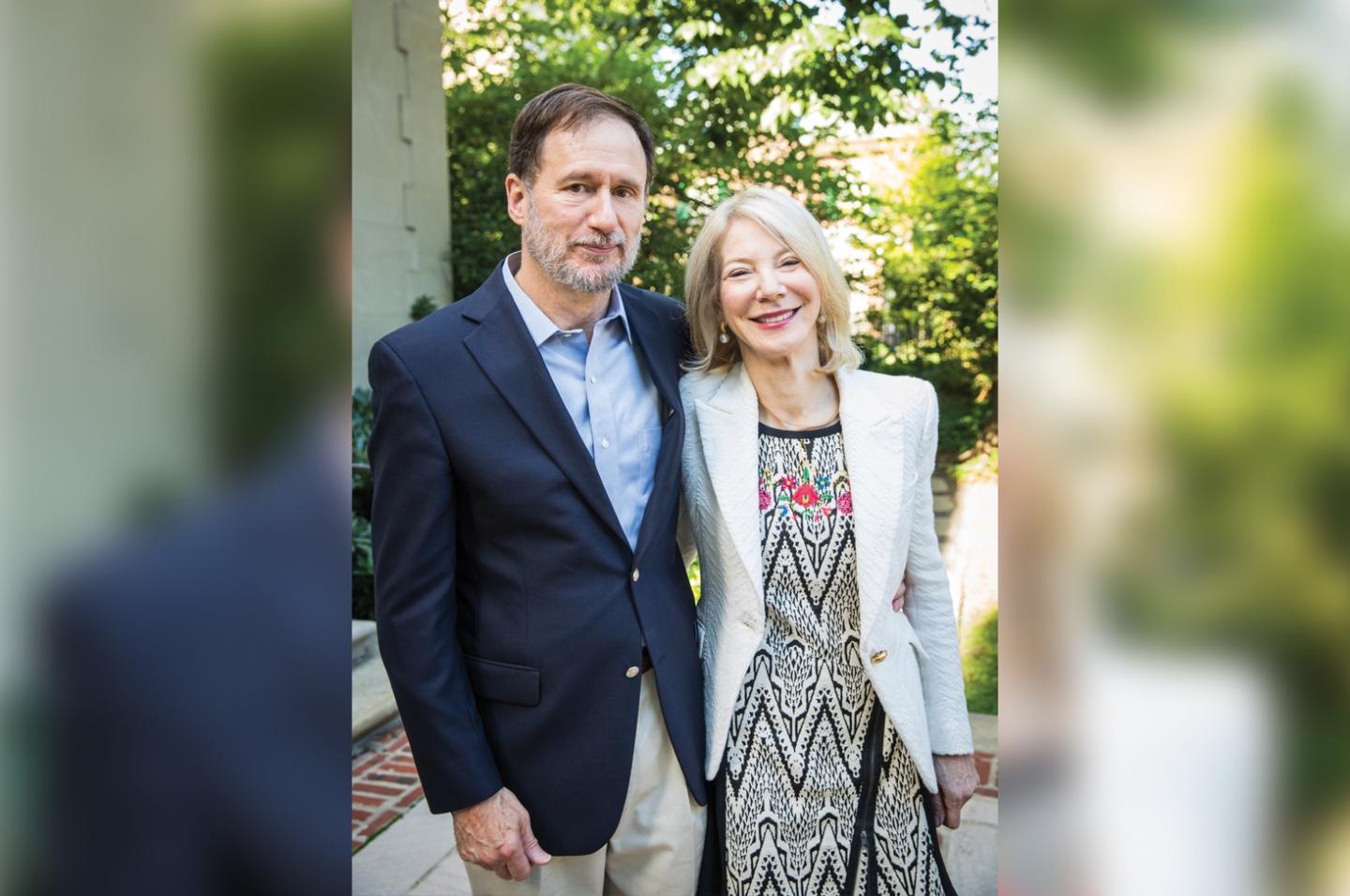PHILADELPHIA (October 21, 2020) – University of Pennsylvania President Amy Gutmann and her husband, Michael Doyle, have a made a $2 million gift to the University of Pennsylvania School of Nursing’s Innovating for Life and Living Campaign, as part of the University’s Power of Penn Campaign. The gift, which brings the couple’s total giving to Penn to $4.5 million, will create the Gutmann Leadership Scholars Program at Penn Nursing.
The newly endowed program will select and fund 10 scholars annually across undergraduate and graduate degree-levels, creating new cohorts of leaders at Penn who are prepared to deliver exceptional care, locally and in communities around the world. The program will have immediate impact, launching in January 2021, with new scholars selected every year, in perpetuity. Scholarship candidates will be selected by Penn Nursing Professor and Margaret Bond Simon Dean of Nursing, Antonia Villarruel, and a specially appointed admissions committee. Selection criteria will prioritize diversity, first-generation status, high academic achievement, demonstrated leadership potential, and an expressed desire to make a lasting impact in underserved urban and rural communities.
“Philadelphia, our country, and the world desperately need more nurses and nursing leaders,” said Gutmann. “Nurses consistently rank among the most trusted professionals, and it is a trust eminently well-earned through their compassion, strength, and selfless dedication to improving and saving lives. Serving on the front lines of healthcare, they are heroes in the effort to contain and defeat the COVID-19 virus. They are also key to making high-quality healthcare both universal and affordable. Michael and I want to do our part to support the most talented and diverse nursing students who are eager to serve in urban and rural areas that need them most. We fervently hope that our gift will inspire others to join us in supporting Penn Nursing, the top-ranked nursing school in our country and the world.”
Penn Nursing’s leadership in innovation and reputation as a trusted partner is unparalleled. In addition to its number one ranking in the world for five years in a row, it is also the top ranked nursing school in funding from the National Institutes of Health, and its faculty comprise a higher percentage of both Fellows in the American Academy of Nursing and members of the National Academy of Medicine than any other peer institution. With alumni living in more than 50 countries around the world, the program’s newly-minted scholars will join a vast network with an ever-growing legacy of global impact.
“The value of nursing has never been more evident than it is today as we grapple with the dual pandemics of Covid-19 and systemic racism,” said Dean Villarruel. “When the World Health Organization designated 2020 as the Year of the Nurse and Midwife, it affirmed the critical importance of nursing, while calling for renewed investments in nursing education and leadership. I am beyond proud and honored that Amy Gutmann and Michael Doyle are leading by example in the establishment of the Gutmann Leadership Scholars Program at Penn Nursing. It is an unprecedented demonstration of support for Penn Nursing and for nurses around the world.”
Dr. Gutmann is the 8th President of the University of Pennsylvania, serving since 2004, and is the Christopher H. Browne Distinguished Professor of Political Science in the School of Arts and Sciences. Dr. Doyle is a University Professor at Columbia University’s School of International and Public Affairs. Together, they have a longstanding commitment to financial aid, including creating the Amy Gutmann and Michael Doyle Endowed Scholarship to support undergraduates who would otherwise be unable to meet the cost of a Penn education, and the Amy Gutmann and Michael Doyle President’s Men and Women of Pennsylvania Challenge Fund to encourage additional endowment gifts to support undergraduate scholarships at the University. They also established the Amy Gutmann and Michael Doyle Research Opportunities Endowment Fund for undergraduates and have supported The Penn Fund and a variety of other areas throughout the University.
###
The University of Pennsylvania School of Nursing is one of the world’s leading schools of nursing. For the fifth year in a row, it is ranked the #1 nursing school in the world by QS University and is consistently ranked highly in the U.S. News & World Report annual list of best graduate schools. Penn Nursing is currently ranked # 1 in funding from the National Institutes of Health, among other schools of nursing, for the third consecutive year. Penn Nursing prepares nurse scientists and nurse leaders to meet the health needs of a global society through innovation in research, education, and practice. Follow Penn Nursing on: Facebook, Twitter, LinkedIn, & Instagram.
The University of Pennsylvania, founded in 1740, is an Ivy League institution with a distinctive past. Its 12 undergraduate, graduate and professional schools are located in Philadelphia on an attractive urban campus that serves a diverse community of more than 20,000 students from throughout the nation and around the world. Ranked consistently among the top universities in the nation, Penn has a longstanding reputation for excellence in graduate and professional education. Follow Penn on: Facebook, Twitter, LinkedIn, & Instagram.











































